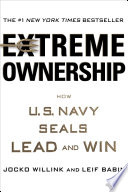

Ego can be one of the biggest obstacles to effective leadership. Leaders must be willing to put aside their personal pride and accept constructive criticism. This means being open to feedback from peers and subordinates and recognizing that their way is not always the best way. By checking their ego, leaders can create a more collaborative environment where team members feel valued and heard. This principle encourages humility and fosters a culture of mutual respect and teamwork, ultimately leading to better decision-making and outcomes.
Continue readingIn military operations, 'Cover and Move' refers to the tactical maneuver of providing cover while others move. In a business context, this principle translates to teamwork and collaboration. Leaders must ensure that their teams work together effectively, supporting one another to achieve common goals. This involves clear communication, understanding each other's roles, and being willing to help one another. By fostering a culture of teamwork, leaders can enhance productivity and ensure that all team members are aligned and working towards the same objectives.
Continue readingComplexity can lead to confusion and mistakes, especially in high-pressure situations. The authors stress the importance of simplifying plans and processes to ensure that everyone understands their roles and responsibilities. This means breaking down tasks into manageable parts and communicating clearly. When plans are simple and straightforward, it reduces the likelihood of errors and enhances execution. Leaders should strive to create clarity in their communication and ensure that their teams can easily follow and implement plans.
Continue readingThe central premise of 'Extreme Ownership' is that leaders must take complete responsibility for everything in their world. This means that if a team fails, the leader must analyze what they could have done differently to prevent that failure. This principle emphasizes that blaming others or external circumstances is counterproductive. By owning the outcome, leaders can learn from mistakes, implement changes, and foster a culture of accountability within their teams. This creates an environment where everyone is encouraged to take responsibility for their actions, leading to improved performance and morale.
Continue readingThis idea reinforces the belief that the effectiveness of a team is directly linked to its leadership. If a team is underperforming, it is the leader's responsibility to identify the root cause and make necessary adjustments. This could involve better training, clearer communication, or motivation strategies. The authors illustrate this with examples from their military experience, showing how leadership can turn a failing team into a successful one. This principle encourages leaders to focus on their development and the development of their team members to ensure success.
Continue readingFor a team to successfully execute a mission, every member must believe in it. Leaders should communicate the mission's importance and ensure that each team member understands their role within it. When people are passionate about what they are doing, they are more likely to put in the effort and overcome obstacles. This belief fosters a sense of ownership among team members, motivating them to contribute to the mission's success. The authors emphasize that leaders must embody this belief themselves to inspire their teams effectively.
Continue readingIn chaotic environments, it is crucial to prioritize tasks and execute them effectively. Leaders need to assess the situation, identify the most critical tasks, and focus on executing them one at a time. This principle prevents overwhelm and ensures that resources are allocated effectively. The authors emphasize that in high-stress situations, maintaining a level-headed approach and focusing on what is most important can lead to successful outcomes. This approach encourages leaders to remain calm under pressure and make informed decisions.
Continue reading